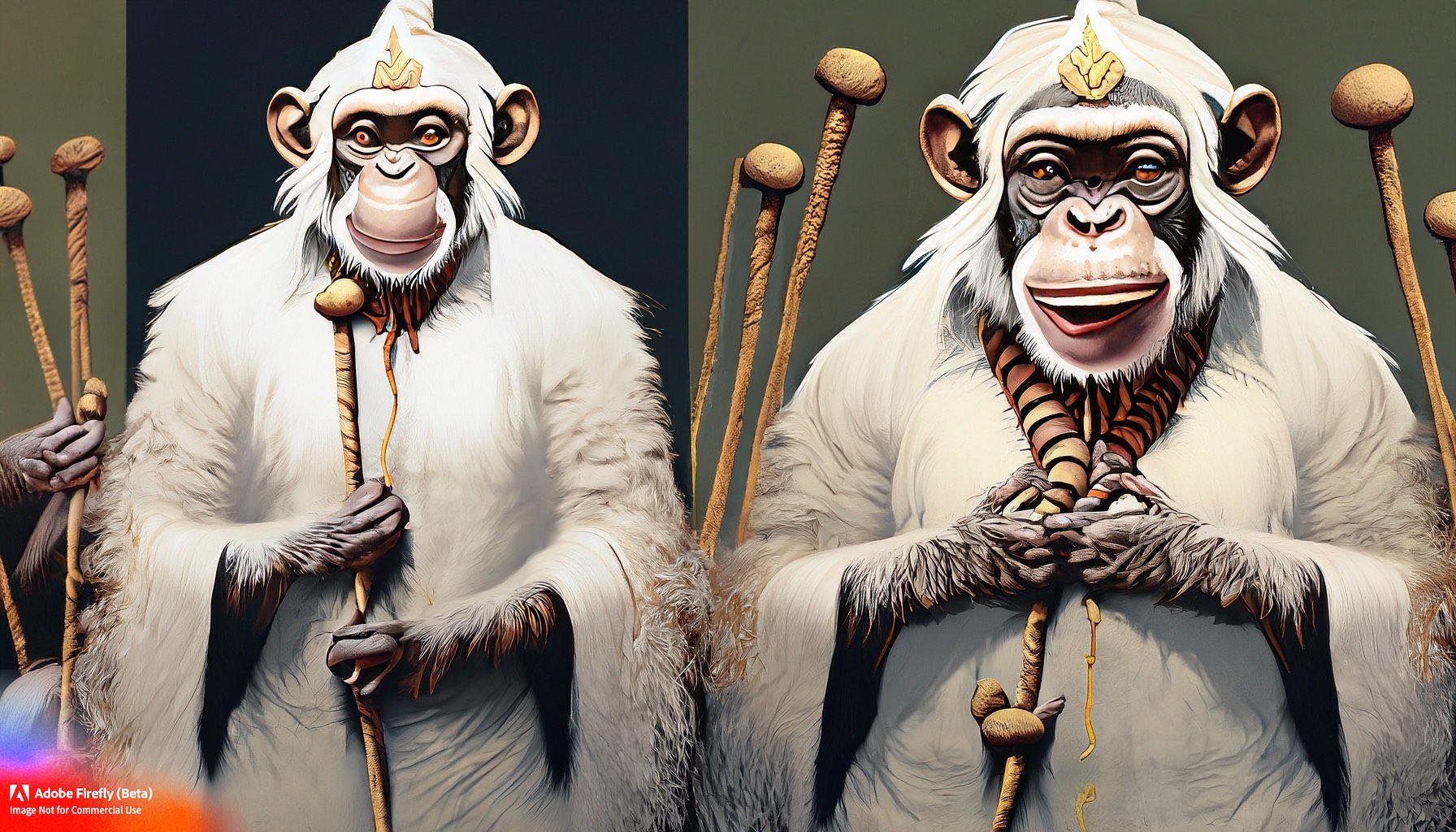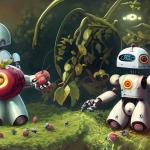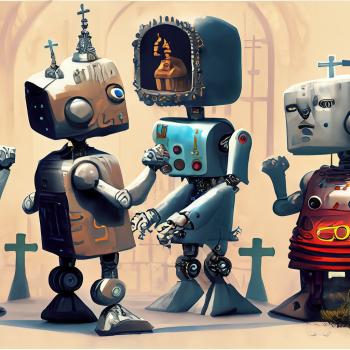
What is Technology?
To understand technology and the progress it has enabled you have to use a very expansive definition of technology. For a sense of what this expansive definition might entail, let’s look at a very simple example: chimpanzees using sticks to “fish” for termites.
For those unfamiliar with how this works allow me to quote from an article on the subject:
Approximately 60 years ago, primatologist and anthropologist Jane Goodall found evidence of termite fishing in wild chimpanzees. It was the first example ever recorded of tool use by a species other than human. Termite fishing by chimpanzees involves breaking a twig off of a tree, removing its leaves and then poking it into a nest to collect ants to eat—ants are an important source of protein.
Everyone is basically on board with tool use being a form of technology, albeit a primitive one. What the chimpanzees are doing ends up being more complex.
As it turns out, different groups of chimps have specific “cultures” of termite fishing. Some only fish from aboveground nests, others from underground nests. Some use soft sticks, others rigid sticks. The various groups also did different things with their hands. Consider two examples from the article:
One group in a community called Kayan, for example, fished only in aboveground nests and used only soft sticks. And after biting off the end of the stick, the chimps tended to lean on one forearm while fishing and used just one hand to bring the stick with ants on it into their mouths. Chimps in another community called Goualougo would use only rigid sticks, and they would scratch at the tunnel entrance to the ant nest with their fingers, insert their stick, then use both hands to pull it out. They then used one hand to remove the ants from the stick, which they then ate.
Each group had a different culture of termite fishing, and this culture was inextricably linked to the technology the chimps employed.
Culture is a form of technology.
Cultural Evolution vs. Natural Evolution
Of course culture is a very specific form of technology. To understand it better let’s look at how it develops. It turns out that culture evolves in much the same way that a species evolves.
Natural selection gives various animals specialized talents.
Giraffes have tall necks for eating hard to reach leaves.
Cheetahs can run fast to chase down prey.
Chimpanzees can climb trees to avoid predators.
The distant ancestors of the giraffes didn’t have tall necks; other big cats aren’t as fast as cheetahs; and some mammals don’t climb trees, even if the very earliest mammals all did. All of these genetic talents developed over hundreds of thousands of years.
Cultural traits are similar in that they give the tribe/nation/civilization which possesses them abilities they otherwise wouldn’t have. There must also be selection pressure. Cultures which evolve beneficial traits should flourish while those that develop negative traits should falter. These similarities aside, cultural evolution is different in that change happens very quickly and the adaptations created thereby are easy to pass along. You don’t have to wait for the next generation, you only have to wait for someone to teach you.
We see all of these attributes in the different ways the groups of chimpanzees use their sticks. At some point the technique of biting the end off of a soft stick was unknown, until some chimpanzee tried it. Now all the chimpanzees from that group bite the end of their sticks, presumably because it works better.
If culture is technology then cultural evolution is how that technology improves.
Cultural and Religion
Obviously many people believe that religion consists of a divinely-inspired set of beliefs — eternal truths that have been around forever and will be around forever. At a foundational level, so do I. But it’s also clear that religion is also the means by which culture, and the evolution of that culture is expressed.
As a member of the Church of Jesus Christ of Latter-day Saints (LDS), I believe this evolutionary viewpoint is in keeping with our doctrine. We’re here on this world in order to prepare ourselves for the next one. As such, human progress is real and religion is a manifestation of that progress. From this perspective religion isn’t merely the embodiment of human cultural evolution, it also partakes of some divine culture as well.
To put it a different way for my LDS audience. A religion which allows us to eventually assume the divinity of God is the ultimate technology.
But for the moment let’s set the divine aside and start from ground zero.
Let’s view religion as if we’re agnostic. The very first question we might ask is, “Why does religion exist?” Cultural evolution gives us a very satisfying answer. Religion exists as a way of packaging the beneficial traits which have emerged from cultural evolution and passing them forward in time. I’ll illustrate what I mean with an example:
Counting just by the number of distinct cultures, humans are overwhelmingly polygamous, but if you look at the most successful cultures — the ones that came to dominate the world — they are very monogamous. Polygamy dominates from the standpoint of individual genes — any given man wants to have as many children as possible. But strong, monogamous marriage dominates at the level of the whole society. This sort of marriage evolved in several cultures, ended up being successful and was subsequently reified by making it a religious doctrine. The technology of monogamy was embedded into the creeds of our religion.
The Future of Religion as Technology
While religion is cultural technology, it doesn’t account for 100% of that technology. Some of it is bound in the customs of our nation and society, outside of a formal religion. Though even this sort of cultural technology is labeled as a religion, we just refer to it as a civic religion
Beyond these forms of technology there is of course lots of technology which doesn’t appear to be part of a culture. This is the technology embedded in computer programs, or cars, or buildings. However, even here you might say such things would be part of an engineering culture. But if it is culture, it’s very different from the cultures of the past.
There was a time when all of our technology was closely intertwined with our culture, and a time when culture was indistinguishable from religion. As such religion and technology were basically the same thing. Technology and religion were symbiotic. As cultures evolved they created technology through that evolution. Whatever part of it was successful was absorbed into religion. But, for very good reasons, religion moves very slowly. So we created civic religions, which moved a little faster and were better at incorporating technology and cultural progress more broadly. But now technology is moving too fast for even civic religion to keep up. You could say that we now have an engineering culture which creates our technology, but, if so, for the first time we are using technology in a way disconnected from our religion.
We are definitely subsumed by technology, but we aren’t a part of the culture creating that technology.
This has left us unmoored and divided.
Before we can absorb and acclimate to beneficial technologies, they’re gone and replaced by still newer ones. But we still have a persistent sense that we need a deeper connection to our tools. This sense has spawned all manner of ersatz religions, many of which revolve around our technology.
The most common is a vague belief in the power of progress itself.
That things will just keep getting better.
That our culture and religion don’t need to be connected to our tools, that our tools will just keep improving, and that this, by itself, will be sufficient.
Let’s hope that they do, but I fear that they won’t.
If you would prefer to listen to this post you can find an audio version here.












